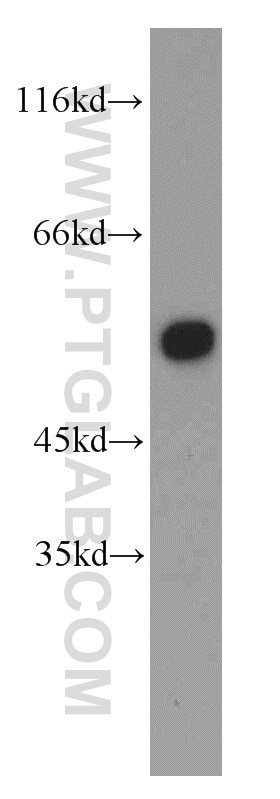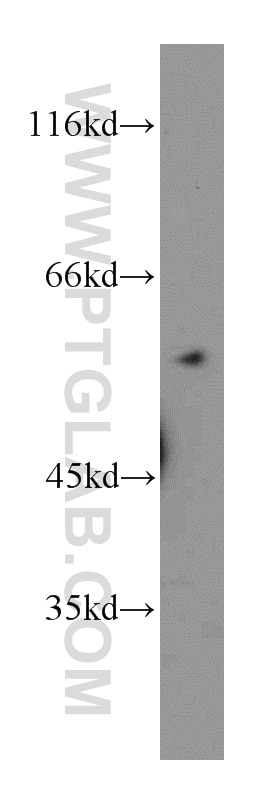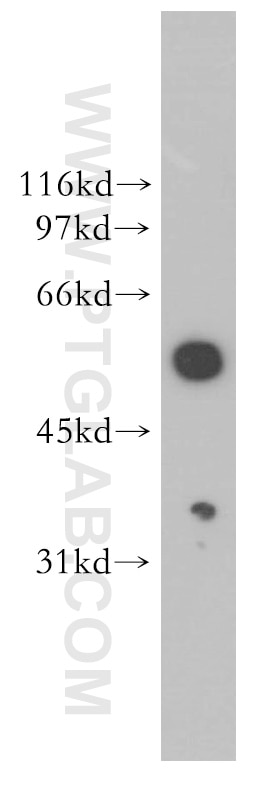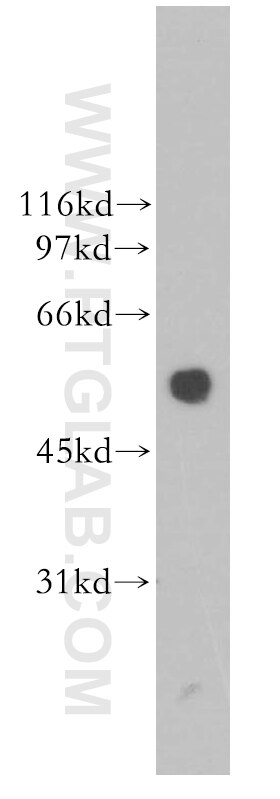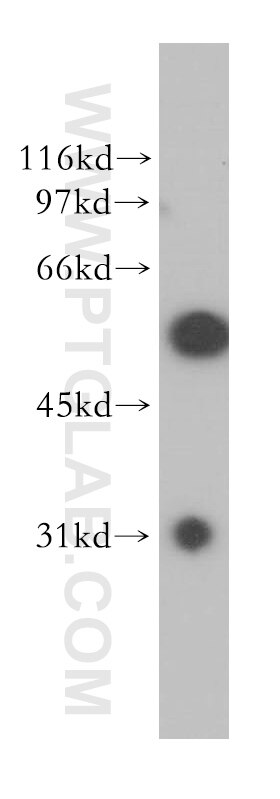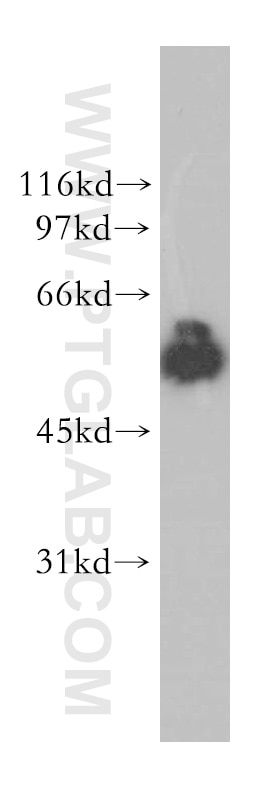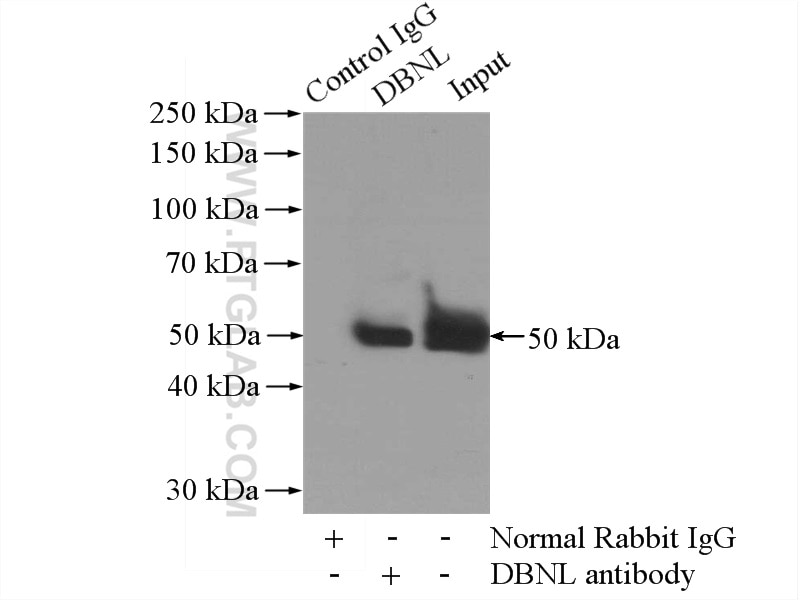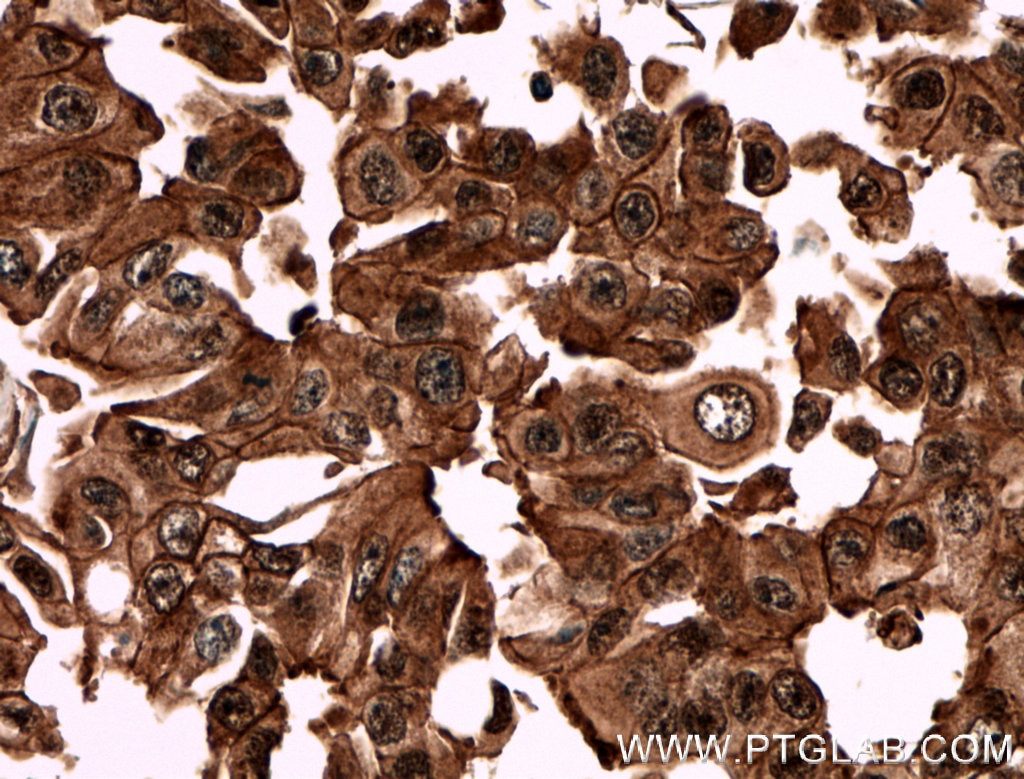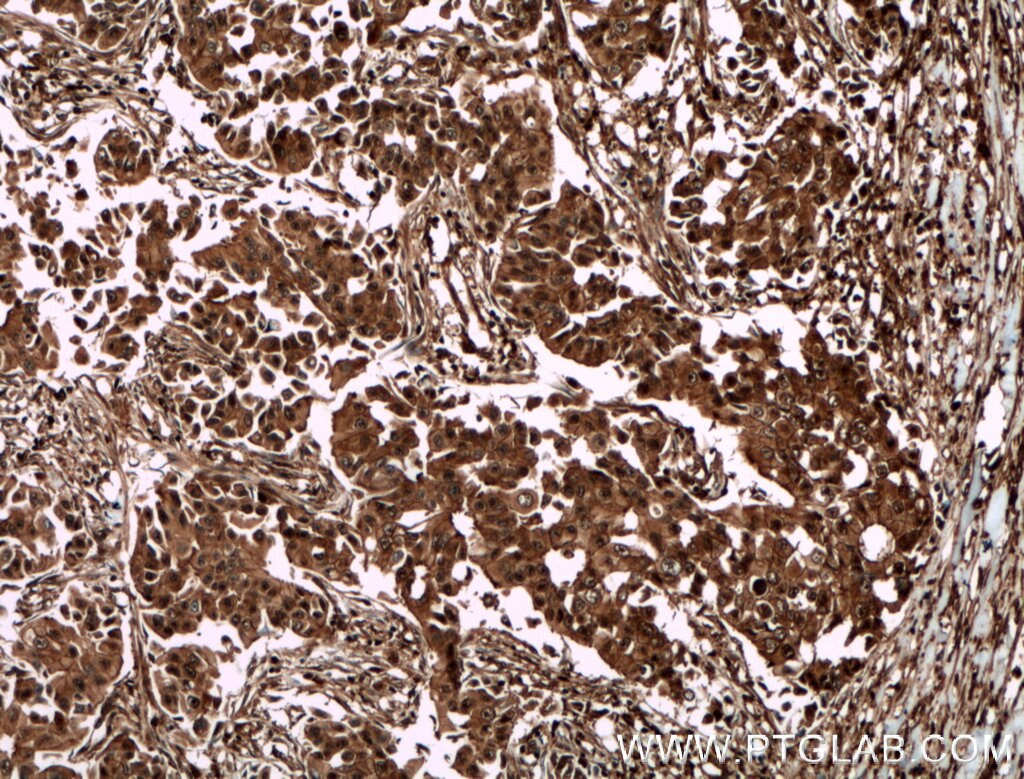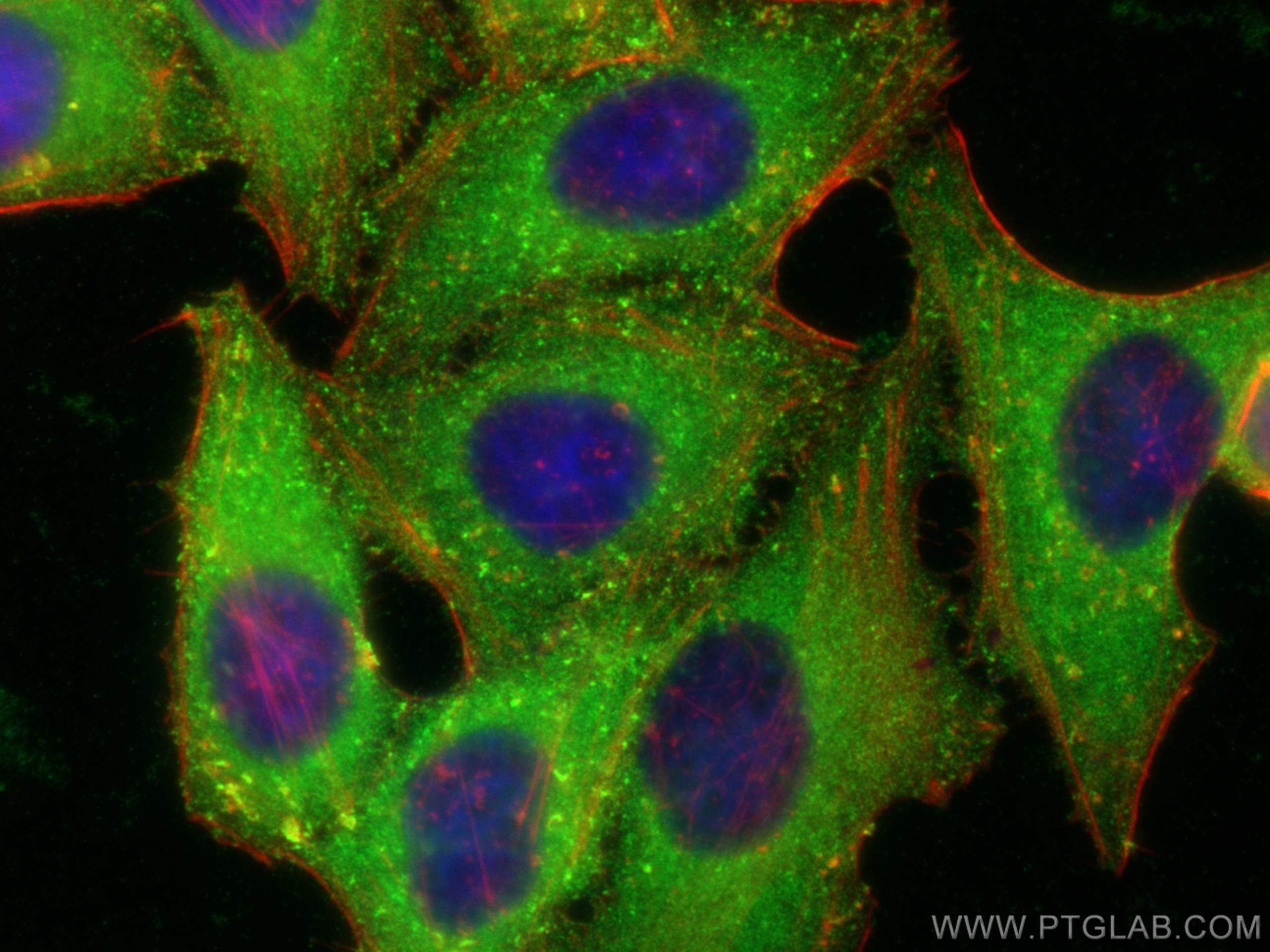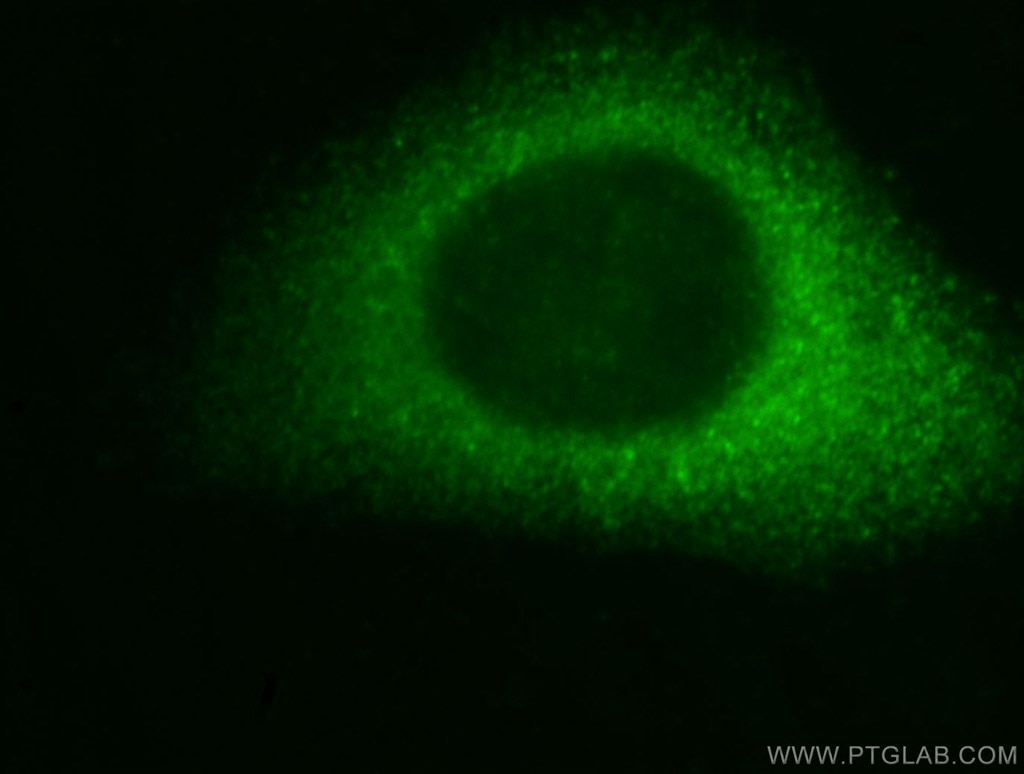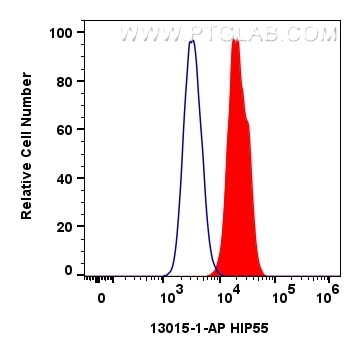- Phare
- Validé par KD/KO
Anticorps Polyclonal de lapin anti-HIP55
HIP55 Polyclonal Antibody for WB, IHC, IF/ICC, FC (Intra), IP, ELISA
Hôte / Isotype
Lapin / IgG
Réactivité testée
Humain, rat, souris
Applications
WB, IHC, IF/ICC, FC (Intra), IP, ELISA
Conjugaison
Non conjugué
N° de cat : 13015-1-AP
Synonymes
Galerie de données de validation
Applications testées
| Résultats positifs en WB | tissu cérébral de souris, cellules HeLa, cellules Jurkat, cellules K-562, tissu cardiaque de souris, tissu cardiaque humain |
| Résultats positifs en IP | tissu cérébral de souris |
| Résultats positifs en IHC | tissu de cancer du sein humain, il est suggéré de démasquer l'antigène avec un tampon de TE buffer pH 9.0; (*) À défaut, 'le démasquage de l'antigène peut être 'effectué avec un tampon citrate pH 6,0. |
| Résultats positifs en IF/ICC | cellules HepG2, |
| Résultats positifs en FC (Intra) | cellules HepG2 |
Dilution recommandée
| Application | Dilution |
|---|---|
| Western Blot (WB) | WB : 1:500-1:3000 |
| Immunoprécipitation (IP) | IP : 0.5-4.0 ug for 1.0-3.0 mg of total protein lysate |
| Immunohistochimie (IHC) | IHC : 1:50-1:500 |
| Immunofluorescence (IF)/ICC | IF/ICC : 1:200-1:800 |
| Flow Cytometry (FC) (INTRA) | FC (INTRA) : 0.40 ug per 10^6 cells in a 100 µl suspension |
| It is recommended that this reagent should be titrated in each testing system to obtain optimal results. | |
| Sample-dependent, check data in validation data gallery | |
Applications publiées
| KD/KO | See 1 publications below |
| WB | See 3 publications below |
| IF | See 2 publications below |
| IP | See 2 publications below |
Informations sur le produit
13015-1-AP cible HIP55 dans les applications de WB, IHC, IF/ICC, FC (Intra), IP, ELISA et montre une réactivité avec des échantillons Humain, rat, souris
| Réactivité | Humain, rat, souris |
| Réactivité citée | Humain, souris |
| Hôte / Isotype | Lapin / IgG |
| Clonalité | Polyclonal |
| Type | Anticorps |
| Immunogène | HIP55 Protéine recombinante Ag4078 |
| Nom complet | drebrin-like |
| Masse moléculaire calculée | 430 aa, 48 kDa |
| Poids moléculaire observé | 55 kDa |
| Numéro d’acquisition GenBank | BC031687 |
| Symbole du gène | HIP55 |
| Identification du gène (NCBI) | 28988 |
| Conjugaison | Non conjugué |
| Forme | Liquide |
| Méthode de purification | Purification par affinité contre l'antigène |
| Tampon de stockage | PBS with 0.02% sodium azide and 50% glycerol |
| Conditions de stockage | Stocker à -20°C. Stable pendant un an après l'expédition. L'aliquotage n'est pas nécessaire pour le stockage à -20oC Les 20ul contiennent 0,1% de BSA. |
Informations générales
HIP55, also known as DBNL, ABP1, SH3P7, belongs to the ABP1 family. HIP55 plays a role in the reorganization of the actin cytoskeleton, formation of cell projections, such as neurites, in neuron morphogenesis and synapse formation via its interaction with WASL and COBL. HIP55 acts as a key component of the immunological synapse that regulates T-cell activation by bridging TCRs and the actin cytoskeleton to gene activation and endocytic processes (PMID: 14729663). The N terminus of HIP55 contains a putative actin-binding domain found in drebrins, which are involved in brain development, and the C terminus contains an SH3 domain. Expect a band 55 kDa in size corresponding to HIP55 by western blotting.
Protocole
| Product Specific Protocols | |
|---|---|
| WB protocol for HIP55 antibody 13015-1-AP | Download protocol |
| IHC protocol for HIP55 antibody 13015-1-AP | Download protocol |
| IF protocol for HIP55 antibody 13015-1-AP | Download protocol |
| IP protocol for HIP55 antibody 13015-1-AP | Download protocol |
| FC protocol for HIP55 antibody 13015-1-AP | Download protocol |
| Standard Protocols | |
|---|---|
| Click here to view our Standard Protocols |
Publications
| Species | Application | Title |
|---|---|---|
Acta Pharmacol Sin The multifunctional adaptor protein HIP-55 couples Smad7 to accelerate TGF-β type I receptor degradation.
| ||
J Neurosci Drebrin-like (Dbnl) controls neuronal migration via regulating N-cadherin expression in the developing cerebral cortex. | ||
J Cell Sci VEGF-A stimulates podosome-mediated collagen-IV proteolysis in microvascular endothelial cells. | ||
J Microbiol Effect of Salmonella treatment on an implanted tumor (CT26) in a mouse model. | ||
